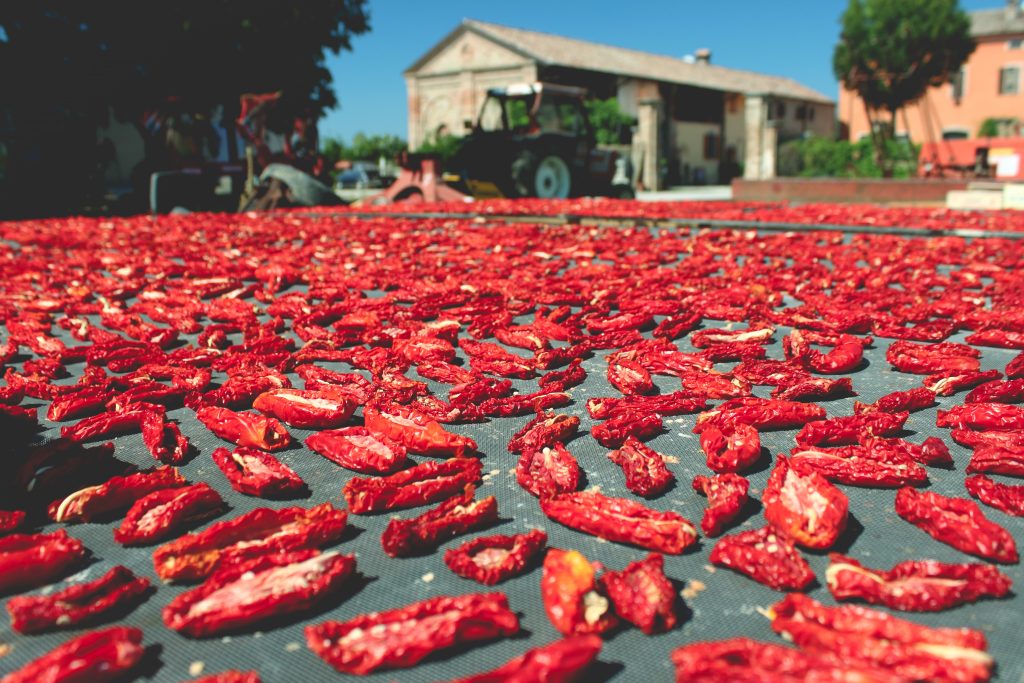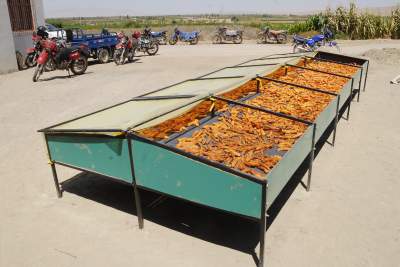One of the oldest ways of food preservation is dehydration. While our forefathers dried their food in the sun, we now have commercial and domestic technologies that can eliminate bacteria-forming moisture. This method keeps food fresh for far longer than it would normally last. Dehydrated foods can be used in salads, cereals, baked goods, and smoothies as a healthier alternative to numerous snacks. They’re also simple to utilize in recipes because they rehydrate in liquid.
Freeze-dried food is undoubtedly a viable option. It’s not dissimilar to eating fresh food. When reconstituted, freeze-dried food keeps almost all of its nutrition and has good colour and texture. It’s almost the ideal method for preserving non-perishable survival food. Freeze-drying preserves 90% of the nutritional value of food, as well as the majority of the colour and texture. Because the freeze-drying method reduces food volume, there are more calories per unit of weight compared to fresh.
Methods For Dehydrating Food
There are several methods for dehydrating your food, but some are more effective than others. Because contemporary tools have helped to enhance the pace of dehydration, your food will be less likely to spoil. The following are the most often utilised approaches nowadays.
1. Sun Drying
It’s difficult to imagine a more traditional or straightforward method of food preservation than sun drying. People have been slicing fruit and hanging it on racks or lines in the sun for around 12,000 years. In areas where the sun shines for lengthy periods of time, sun drying is particularly effective.

Just keep in mind that fruit takes many days to completely dry. To keep flies and other insects at bay, place them on a mesh screen (avoid anything galvanised) and cover them with a second screen.
2. Air Drying
Air drying, like sun drying, is an old way of dehydrating food. The key distinction is that air drying is normally done in the shade.

This is due to the fact that this strategy aids in the preservation of everything that requires protection from the sun’s rays. It’s great for herbs and delicate greens.
3. Solar drying
Solar drying is a step up from sun drying in that it employs a dehydrator powered by the sun to dry your food passively. Solar drying does not require energy because there is no heat source or fans to circulate the air.

Solar dryers are usually made to seem like a miniature tabletop greenhouse and work outside.
How Long Can You Eat The Dried Food?
The difference between consuming fresh whole foods and freeze-dried foods is minimal. Palate tiredness or constipation may occur if you eat freeze-dried for an extended period of time. It’ll be crucial to stay hydrated.
As long as you have enough drinkable water to reconstitute your meals, you can eat and survive on freeze-dried foods indefinitely. Freeze-dried foods are high in antioxidants and fibre, and have nearly the same nutritional value as of fresh meals.
Check the salt level in freeze-dried food before stockpiling it for survival. Pre-packaged backpacker meals are more likely to be heavy in sodium than fruits and vegetables purchased in #10 cans. You’ll know exactly what’s in your freeze-dried food if you freeze-dry it at home using a Harvest Right Freeze-dryer.
How Long Can You Freeze Dried Food Before Cooking?
One should avoid eating uncooked freeze-dried food unless you are eating freeze-dried fruits or veggies. Because freeze-dried hiking meals may never fully rehydrate when exposed to cold water, you may end up eating brittle spaghetti or vegetable chunks.
You don’t have to cook pre-cooked freeze-dried meals, fruits, or veggies. You don’t need to rehydrate or cook fruits, veggies, or ice cream. Meat that hasn’t been cooked before being freeze-dried should be rehydrated and cooked before eating.
Mountain House and other pre-cooked backpacker meals are designed to be reconstituted with hot water. You can soak them in cold water, but you might get some crunchiness when eating them.
If your meal is a fruit, vegetable, or pre-cooked, cold-soaking is an alternative if you are in an SHTF situation and don’t want to make a fire to boil water or are on the go.
Also Read: Learn About Hardtack (The Survival Bread) And It’s Making.
